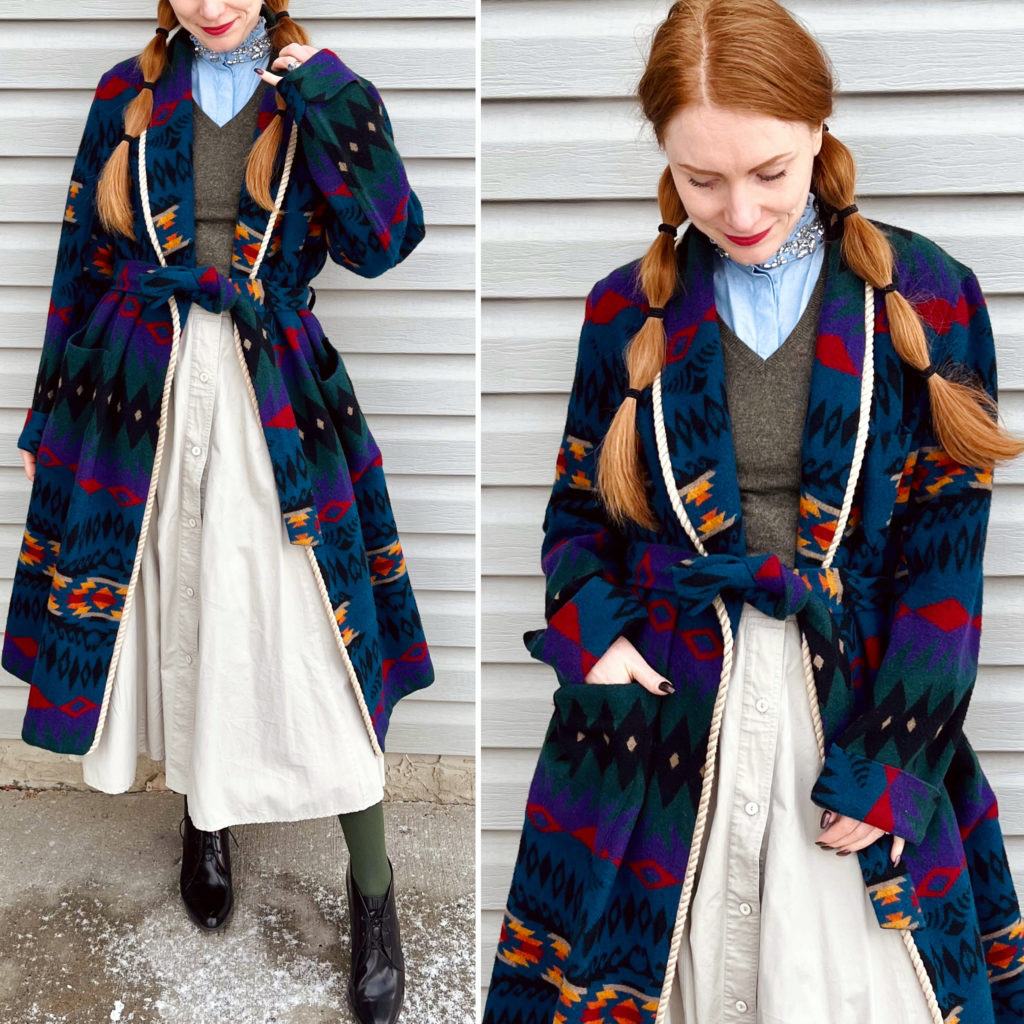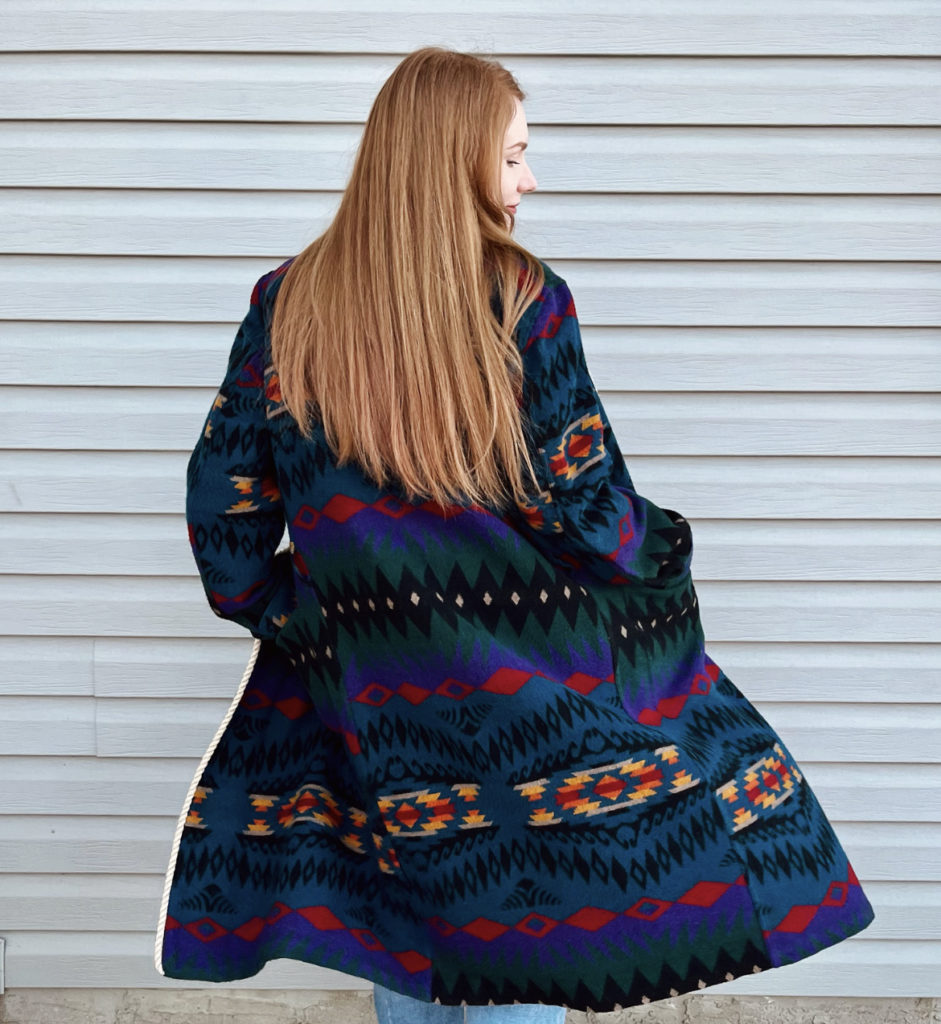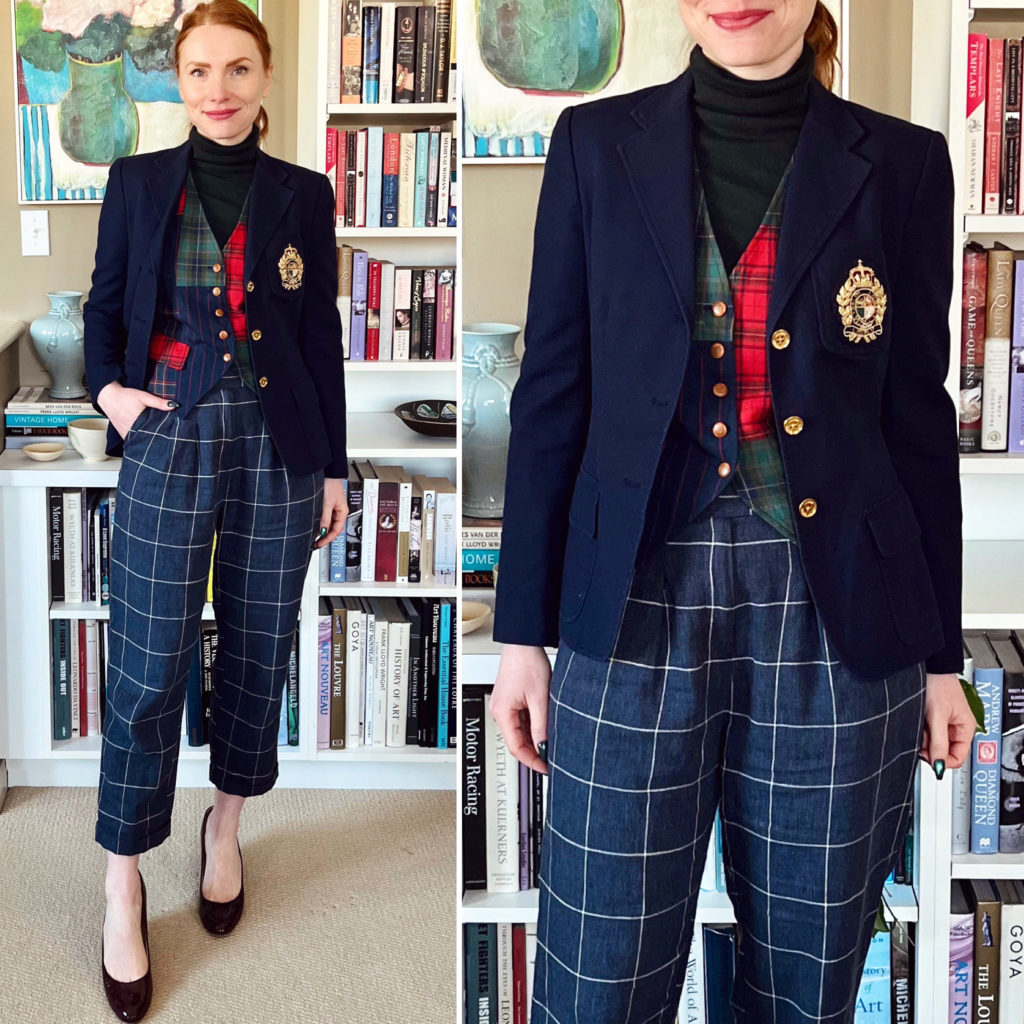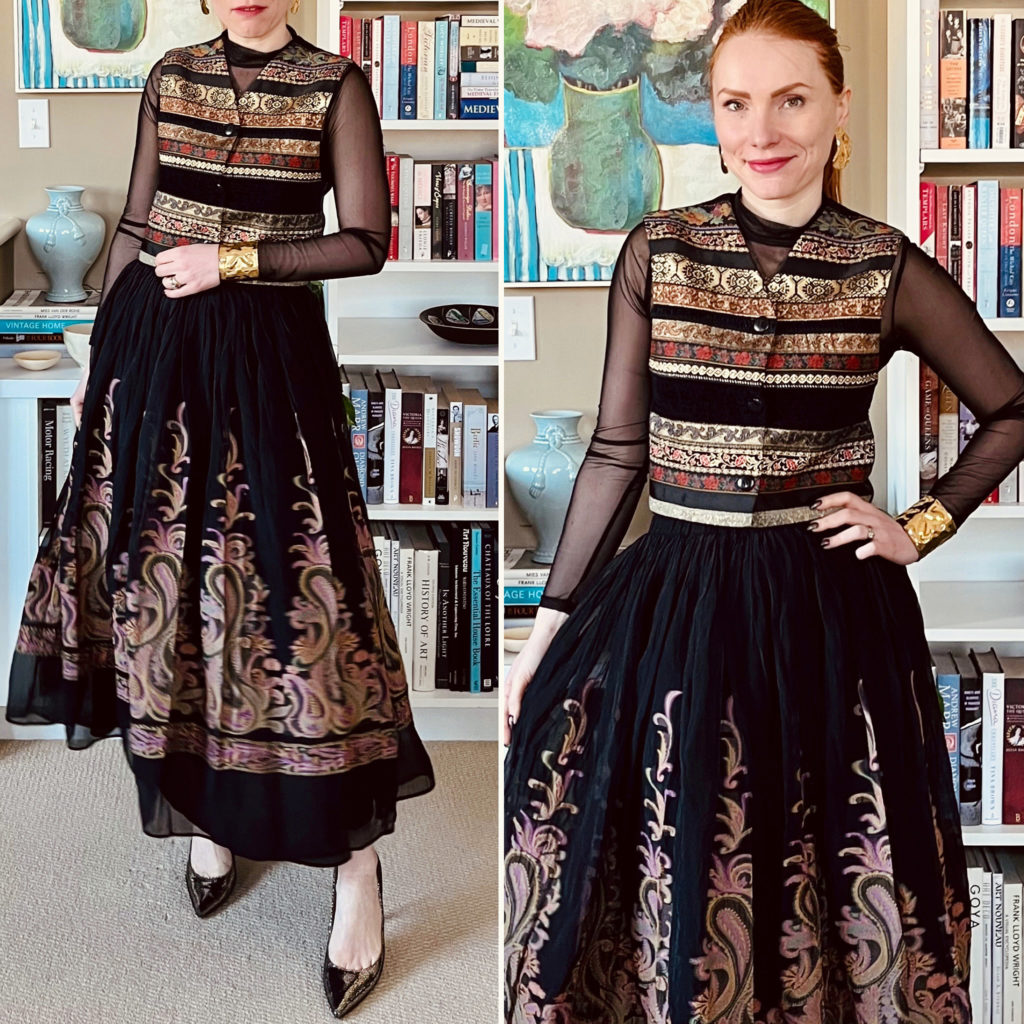
Details: J. Crew shirt, Everlane sweater, Mexx skirt, Pendleton coat (all secondhand)
Thoughts: GUYS!! THIS COAT!! I am in love. Maybe manifesting works after all. I found this amazing vintage Pendleton coat — in mint condition — for a killer price on Poshmark. Honestly, I think it was just a matter of being in the right place at the right time (and swooping in quickly) which is the “secret” to all secondhand shopping. This coat is gorgeous and a total outfit-maker. I’ve been wearing it a LOT lately; it’s an instant “pick me up”. And the timing is right too; the temps are finally rising, so I can ditch my winter coat in favour of lighter ones like this one. Yay for spring and yay for amazing coats!


Details: Club Monaco turtleneck (retail), LizSport vest, Ralph Lauren jacket, Topshop pants (all thrifted)
Thoughts: This was one of my fave recent outfits; it all came together perfectly. I had the pants and vest set aside as “combo” but was missing the topper. I tried a few and nothing was really gelling. Then I remembered that I had this 90s classic monogram RL blazer which I thrifted a while ago but hadn’t worn yet because I couldn’t find the right outfit for it. Well, problem solved. I don’t wear navy a lot, but it’s the right neutral for this colour palette, and the preppiness of the blazer fits right in with the rest.

Details: Rebel Sugar turtleneck (gift), Jacob vest, no label skirt (both thrifted)
Thoughts: I’m calling this vibe “baroque goth”. It’s an aesthetic I didn’t end up exploring as much as I had hoped this winter. I think the main reason for that is the fact that I don’t have a lot of pieces that speak to the ‘baroque’ part. Nor have I been able to find things under that category that I’ve wanted to add to my closet. But that’s ok. No need to force things; if it’s meant to be, it will happen organically. Like this outfit.

Details: Club Monaco turtleneck (retail), Chaps vest, Malorie Urbanovich skirt, Paloma Picasso belt (all thrifted)
Thoughts: In case you couldn’t tell, this was an outfit inspired by a Ralph Lauren runway look. The runway version had an almost identical fair isle patterned topper; mine is a vest rather than a jacket, but that’s ok. The key styling note was the belt – RL does a lot of belts over sweaters with skirts (or dresses), which is new territory for me, and that can really transform the proportions of an outfit. This Paloma Picasso belt is a real statement too. It actually works better on skirts rather than pants because belt loops can get in the way of the chain (yes, I tried).

Details: Topshop dress, vintage cardigan (both thrifted), Zara shoes (retail)
Thoughts: My version of transitional dressing almost always involves tights. I hesitated over the colour of the tights in this case. I wasn’t sure whether to go with a ‘safe’ choice like black or a dark green that would blend into the background more; but I ended up choosing burgundy instead — which picks up the red in the floral pattern — and I think that bolder choice works well. I stuck with the funkier vibe by choosing chonky platforms rather than a more delicate shoe. This is still something I’m getting my eyes used to (the different shoe proportions) but I think it helps ‘modernize’ the outfit as a whole.
